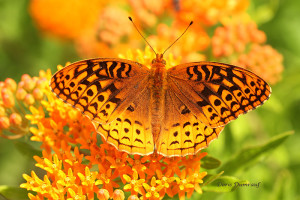Native Plants Are Underappreciated
Ever since we decided to plant native plants in our garden we are faced with the question: Just where can we find native plants? Nurseries are brimming with showy annuals: petunias, zinnias, geraniums, snapdragons, and a wide variety of cross-bred cultivars. Their value for wildlife (as a nectar source) is never even considered, as long as they are beautiful.
Native plants, on the other hand, are much harder to come by. We were lucky to receive a couple of plants from a local museum garden and found others at an Audubon Society’s native plant sale and at a small native plant nursery across town.
During my summer visits to Germany I was astonished to see black-eyed Susans, purple coneflowers, and even goldenrod in many front yards. Why are these plants so popular in Europe and yet so underrepresented in the U.S., I wondered. Is the exotic plant from Asia or Europe so much more attractive than plants native to the U.S.? Our insects would like to differ. After all, they have developed alongside plants that were present here before white settlers arrived.
It is unfortunate that the names of many native plants contain the term “weed.” A butterfly weed is much more attractive if it is called a “butterfly flower.” It is also much more beneficial for insects than a butterfly bush, which is non-native. “But I see many butterflies on my butterfly bush,” I’m often told. However, a butterfly bush is not a host plant for butterflies. And guess what? You can’t have adult butterflies if they can’t find a host plant for their eggs. And goldenrod, often wrongly accused of causing allergies, is an essential early fall plant for insects such as the migrating monarch butterfly in this image.
If everyone would consider the value for wildlife instead of focusing on the visual appeal of flowers, they might observe many more butterflies and bees in their yards.


